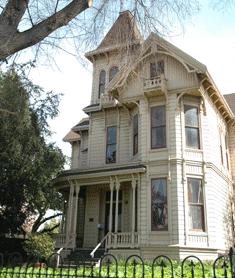
Searching for opportunities to expand his knowledge in historic preservation, Chris Lutjen, LEED AP BD+C, Garavaglia Architecture, Inc’s Job Captain, was awarded a Grant for Early Professionals in Preservation. The grant provided monetary assistance for emerging professionals to attend the Association of Preservation Technology (APT) Conference. He was one of five international recipients. As a condition of the grant, Chris was required to identify and plan a volunteer service project in his local community. His chosen community organization was the Victorian Preservation Center of Oakland; a non-profit organization that manage and preserve the National Register listed Cohen Bray House in Oakland, CA. This home is one of the best examples of the Victorian era’s high-style Aesthetic fashionable in the mid-1880s. Chris attended this year’s conference held in Victoria, BC in October 2011. The conference was held at the Historic Victoria Conference Center, Crystal Garden Building and the Empress Hotel located in the Inner Harbor.
Chris tells us he found many interesting tracks including seismic upgrades, materials treatment, and codes. One of the more interesting presentations he found was the review of the recently revised “Illustrated Guidelines on Sustainability for Rehabilitating Historic Buildings” presented by Jo Ellen Hensley, one of the coauthors.
To follow up on his grant stipulations, Chris will be providing assistance for the stabilization and accessibility upgrades of the Cohen-Bray House this fall. This service project is intended to make the Cohen Bray House more accessible to the local community, especially children, elderly, and visiting scholars. Chris will conduct multiple site visits, review existing documentation, and assist in pro

ject planning for the house museum. This project serves dual purposes for Chris as he can also use it to help complete the requirements for the intern development program, furthering him towards obtaining an architectural license. A post-project report, including the project highlights and accomplishments, will be published in APT’s online newsletter, the Communiqué.
